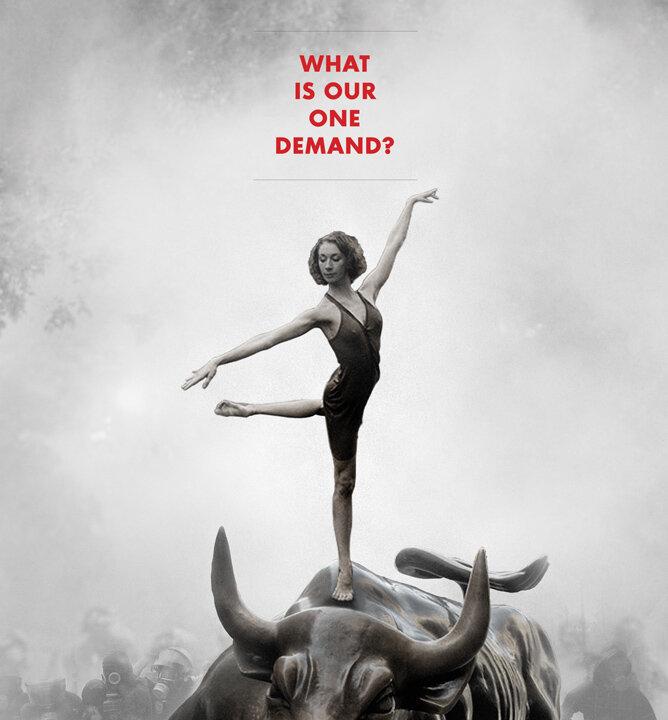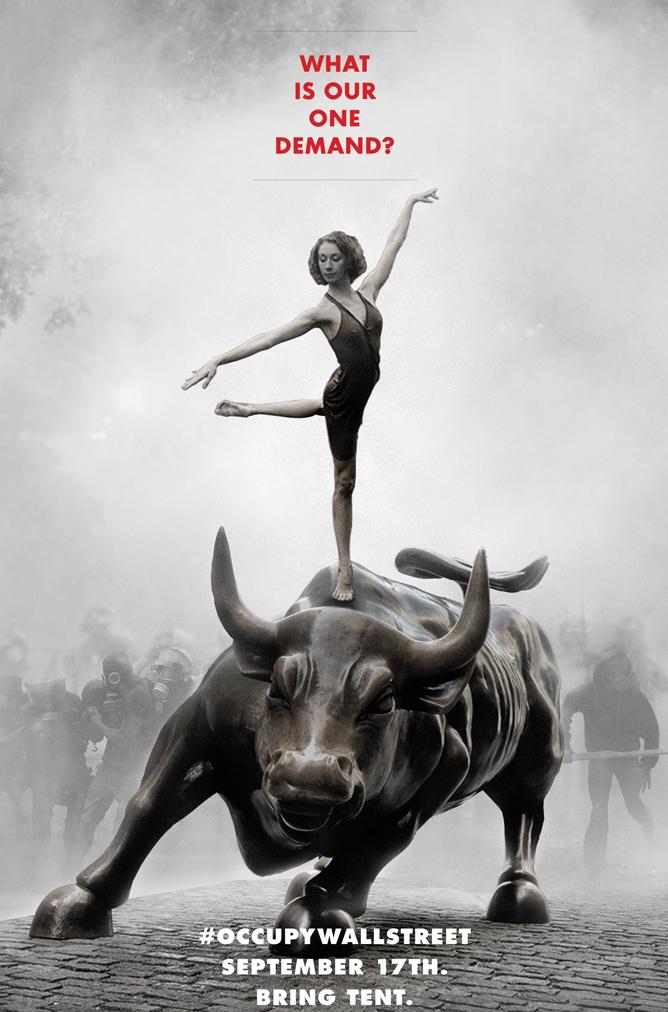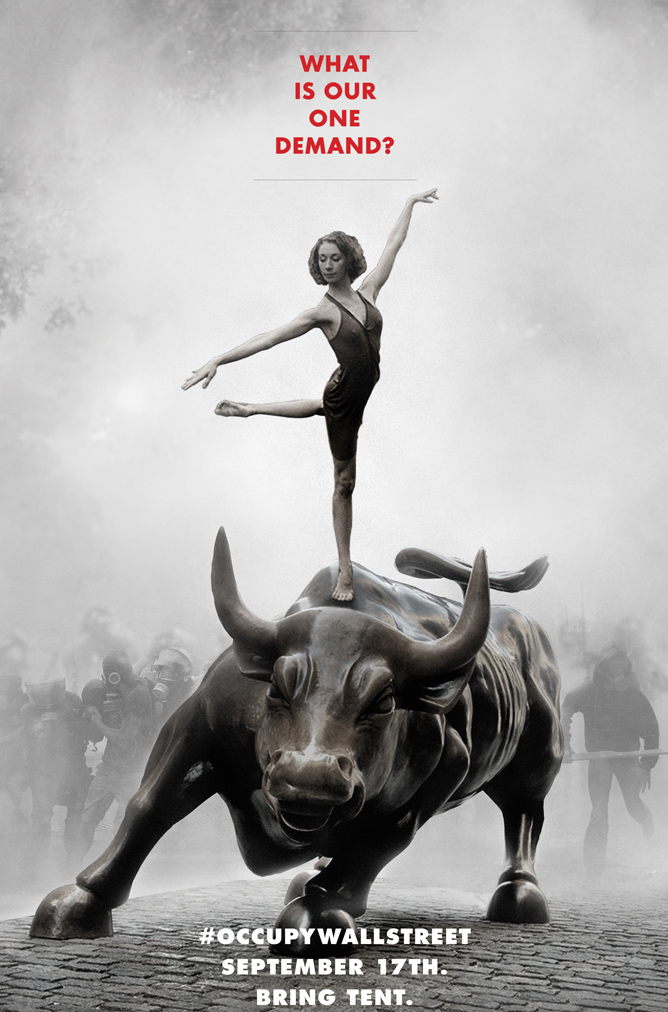NEW YORK—Writers and editors for Adbusters, the Canadian social activist-oriented magazine, sat around a table earlier this year and brainstormed ideas for the coming year based on online feedback from 90,000 readers.
On the West Coast of Canada, in Vancouver, Occupy Wall Street was born.
Adbusters decided to overthrow the reigning paradigm of “corporatocracy”—what the magazine describes as corporate power overshadowing the power of individual voters. The regime change in Egypt provided inspiration, according to Adbusters Editor-in-Chief Kalle Lasn.
A poster of a ballerina on top of a Wall Street Bull slipped through the printing press and into the magazine—a typical abstract call to action for the arts-oriented magazine. On July 13, Adbusters posted a detailed and explicit call to occupy Wall Street on its blog.
“On September 17, we want to see 20,000 people flood into Lower Manhattan, set up tents, kitchens, peaceful barricades, and occupy Wall Street for a few months. Once there, we shall incessantly repeat one simple demand in a plurality of voices,” read the blog.
Adbusters suggested as the one demand, “that Barack Obama ordain a presidential commission tasked with ending the influence money has over our representatives in Washington.”
Though the voices never did unite with a singular demand, Lasn thinks the direction the movement took is perfect for its “first phase.”
“They decided they are going to do it without leaders, without demands, and be an all-inclusive, horizontal movement,” said Lasn. He expects the second phase of the movement to be more focused.
A YouTube video on Aug. 23 made the call to action viral. Anonymous posted it, a loosely organized hacker collective. Anonymous hackers spread the message across the Web through various social media forums.
Adbusters’ Role in Occupy Wall Street
Writers and editors for Adbusters, the Canadian social activist-oriented magazine, sat around a table earlier this year and brainstormed ideas for the coming year based on online feedback from 90,000 readers.

An image in Adbusters magazine that called on its readers to Occupy Wall Street. Courtesy of Adbusters Magazine
|Updated:






